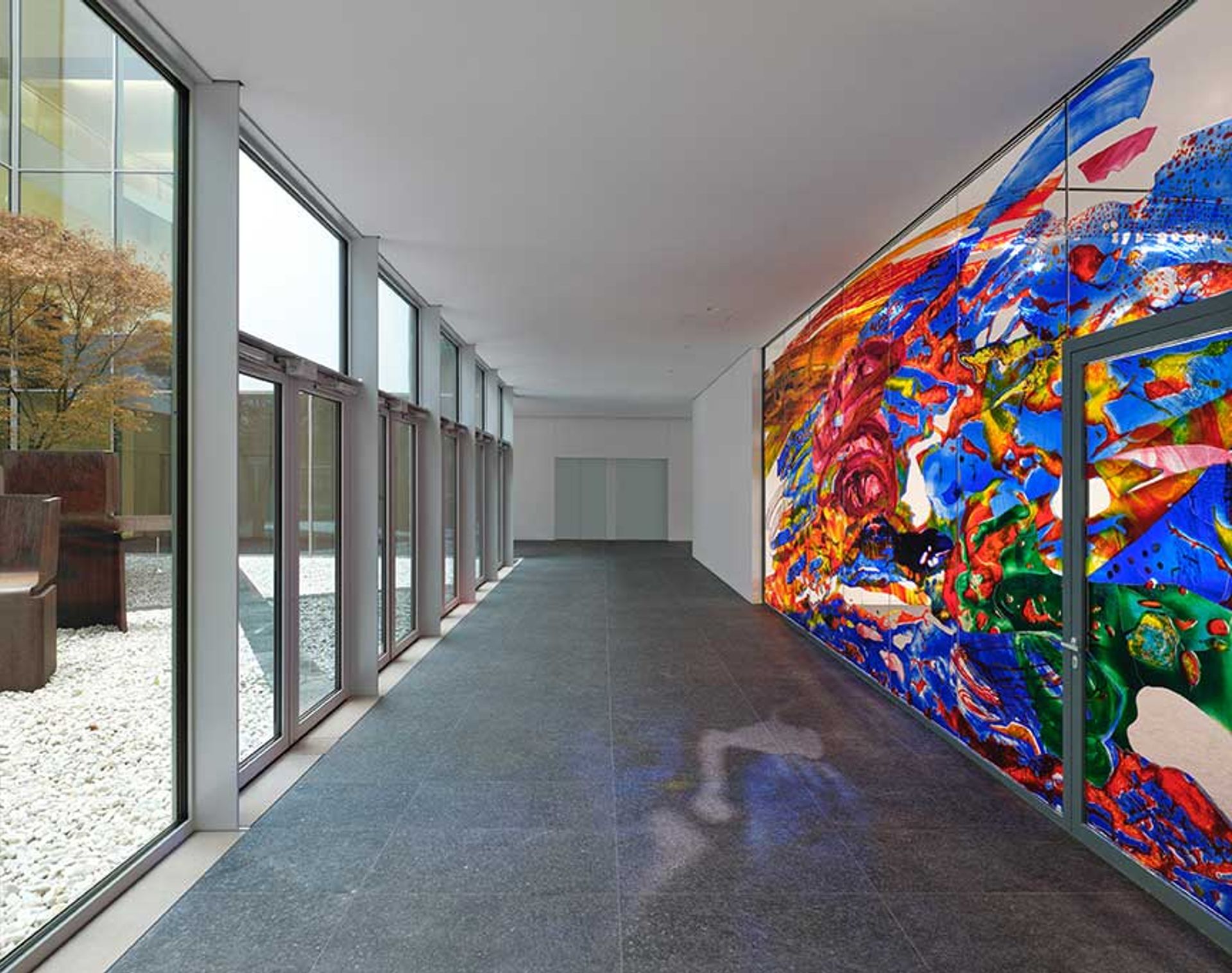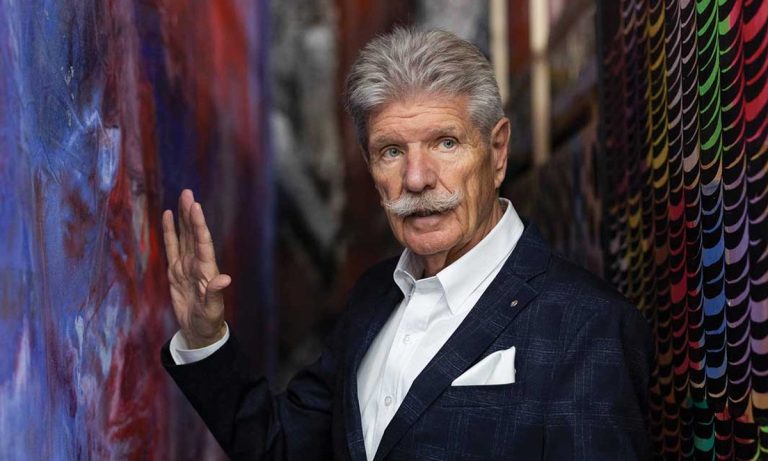Reinhard Ernst, an entrepreneur who built his fortune manufacturing precision gears and motors, was already in his 40s when he discovered a passion for art. Now in his late 70s, he founded a new museum to house his collection of post-war abstract art in Wiesbaden, Germany.
The Reinhard Ernst Museum, in a building designed by Japanese Pritzker Prize-winning architect Fumihiko Maki, who died on June 6, is scheduled to open on June 23. It will show Ernst’s collection, accumulated since the 1980s, of works by artists such as Helen Frankenthaler, Tony Cragg, Lee Krasner, Frank Stella, Pierre Soulages and Yuichi Inoue.
With a gleaming white facade, 14-meter-high ceilings and gray granite floors, the building offers more than 2,500 square meters of exhibition space. It occupies a privileged location provided by the city authorities near the museum of art and natural history in the center of Wiesbaden. The construction costs of around 80 million euros were financed by the Reinhard and Sonja Ernst Foundation.
The museum commissioned glass works by Katharina Grosse, MadC and Karl-Martin Hartmann and an installation by Bettina Pousttchi for the lobby. A sculpture by Eduardo Chillida is displayed in a glazed interior patio.
In 1981, Ernst and three of his colleagues acquired Harmonic Drive, the Japanese-American precision engineering company he worked for, in a management buyout. He bought the rest of the company’s shares in the 1990s, then went public in 1999. Seven years later, he founded another company, Ovalo, which expanded to France, the UK and Spain in 2016. He sold it to a Japanese company in 2017 and retired from his management position at Harmonic Drive.
Interior decoration for serious collection
Over the decades, his art collection grew as his professional life flourished. The first works he bought were from two German artists: Karl Otto Götz and Hubert Berke. On business trips to Japan and the United States, he began visiting museums and, in the late 1980s, began buying Japanese and American art.
“I developed a love for abstract art,” says Ernst The Journal of Art. “I bought the first paintings for decoration to hang on the walls of my house. Over time I bought many paintings and at some point I had no free walls left; then I realized that I had become a collector”.
Reinhard Ernst and his wife Sonja established a foundation in 2000 and funded a community center near Fukushima in Japan and a music school in Eppstein, near his hometown of Wiesbaden. Childless, they consider the foundation “their personal legacy,” according to a statement.
Ernst says he offered his collection to two museums, but neither had enough space to hang more than a few paintings. “So the idea of founding a museum came out of that,” he says.
In addition to more than 40 works by Frankenthaler, who says Ernst is his favorite painter, the collection includes artists such as Robert Motherwell, Richard Diebenkorn, Jackson Pollock, Richard Serra, Damien Hirst, Sarah Morris, Neo Rauch and Toko Shinoda.
Christoph Zuschlag, professor of art history, described it in a report for the city of Wiesbaden as “unique in its international scope, far beyond Europe to Japan and the USA. in its inclusion of all major groups of artists, and in the breadth and quality with which it documents a number of trends and currents” in abstract art after 1945. Zuschlag said he knew of no other collection, either in a museum or in private hands. , which can match it.
Ernst still collects. His latest acquisition, he says, is a painting by the German-British artist Michael Anthony Müller. He buys mostly at auctions and describes New York’s November season as “a must”.

Katharina Grosse is exuberant A glass of water, please (A glass of water, please, 2024) in the new museum
Photo: Martin Url
“I used to go to fairs a lot, but now much less,” he says. “What is seen at fairs does not necessarily reflect the art market. You see many works that are sold to people who sell them again in a couple of years or put them in the cellar. I am neither: I buy for a museum, to show the public.”
The Reinhard Ernst Museum has 60,000 paying visitors in the first year. The mornings will be reserved for schools and didactic visits; from noon, the museum will be open to everyone.
Wiesbaden is among the richest cities in Germany. A traditional spa and gambling resort, it attracted nearly 600,000 visitors last year. Thousands of US troops are stationed in and around the city, a connection Ernst hopes to take advantage of. He says he hopes the museum will attract visitors from the United States and Japan, as well as Germany and neighboring France. He is also interested in lending works abroad.
“Contacts with foreign museums will be very important and we are in the process of developing them,” says Ernst.
• The museum’s first temporary exhibition focuses on its architect. Fumihiko Maki and Maki & Associates: Towards Humane Architecture will run from June 23 to February 9, 2025

